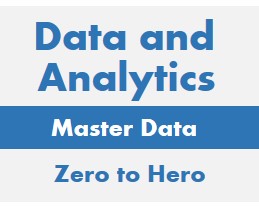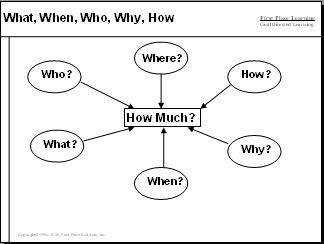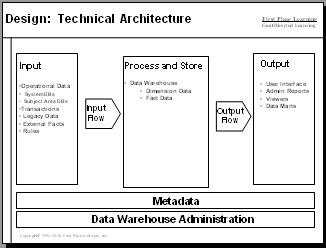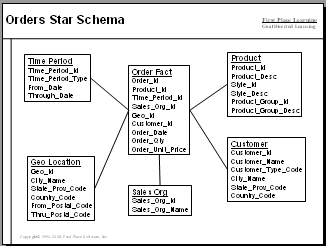


This tutorial article will show you the steps needed to develop and deploy a data warehouse. In addition it will show differences between DW Methodology and Traditional IT Methodologies.
The Data Warehousing Methodology is organized into the following phases:
Developing data warehouses is definitely different than developing other IT systems and so requires a different methodology.
Data Warehousing Methodology:
Traditional IT Methodology:
Data warehousing is not simply creating a set of reports that are run periodically. It involves questions that may lead to initially unpredicted places.
First it is important to know if your organization is ready for data warehousing. If there are business drivers, an appropriate project sponsor and an organizational culture that includes use of data for decisions and cooperation between the business and IT, then the organization is ready.
Business drivers are the business reasons for pursuing data warehousing or any other business objective. Examples of business drivers include
The Project Sponsor is key to the success of the project. Is the following true for your project sponsor?
The organization needs a culture where:
In addition, source data and information technology must be in place. If your organization wants cross selling data in its data warehouse, it needs an operational system that tracks that information which can in turn be provided to the data warehouse.
Requirements describe the needed solution in business terms. In the analysis phase detailed Requirements for Data Warehousing are defined.

Data warehousing Technical Architecture is the high level design for the data warehousing system. It includes technical specifications for:
One of the deliverables of this effort will be the Data Warehousing Technical Architecture Diagrams:

The data warehouse Data Models are visual representations of the databases that make up data warehousing system. These models are useful for bridging from business requirements to the physical system that carries out those requirements.
This tutorial provides a mini-course in data modeling that shows approaches for each of the databases needed:

A data warehouse system is only as good as its Input. In this phase we select that data that will be included in the data warehousing system. To learn how good the data is we use data profiling and data assessment.
In the ETL - Extract Transform Load phase we build Extracts which pull data from the data sources and Transforms which modify the data so that it is ready to be loaded into the data warehousing system. Then we build loads that place the data into the appropriate databases.
In the phase where Construction is done for Presentation and Analysis, the groundwork is put in place for BI - Business Intelligence. Metadata must defined so that data warehousing users can perform analytical functions such as:
To successfully implement a data warehouse, an organization must be confident that the analytics produced include the proper data. The focus of the data warehouse Testing the Data Warehouse Phase is to ensure that the data in the data warehouse is correctly loaded from the source system(s).
The Rollout the Data Warehouse phase includes:
After the data warehouse in put into production, our work has just begun. In the Sustaining Data Warehousing and Business Intelligence Phase, the data warehouse is operated and incrementally improved.
Infogoal.com is organized to help you gain mastery.
Examples may be simplified to facilitate learning.
Content is reviewed for errors but is not warranted to be 100% correct.
In order to use this site, you must read and agree to the
terms of use, privacy policy and cookie policy.
Copyright 2006-2020 by Infogoal, LLC. All Rights Reserved.
